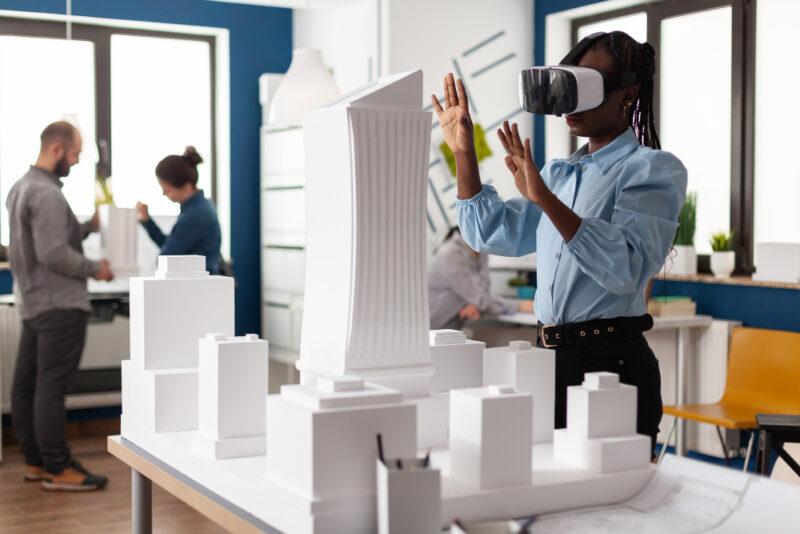The construction industry is no stranger to innovation and technological advancements, continually seeking methods to enhance efficiency, reduce costs, and deliver projects on schedule. Augmented reality (AR) is becoming a revolutionary technology in this sector, offering a plethora of opportunities to streamline processes and speed up project timelines.
This groundbreaking technology facilitates a seamless integration of the digital and physical world, enabling a more collaborative, accurate, and efficient construction process.
In the forthcoming discussion, we will explore how augmented reality in construction can streamline construction practices, specifically focusing on practical strategies to accelerate project timelines significantly.
Planning and design
One key way that augmented reality can speed up project timelines in construction is through improved planning and design processes. With AR technology, professionals can visualize projects in 3D before any physical work begins.
This allows for better communication among team members, early identification of potential issues, and faster decision-making. By catching problems early on and making informed decisions quickly, construction projects can move forward more efficiently.
On-site construction
Augmented reality can also be used on-site to expedite the construction process. By layering or “augmenting” a physical space with a digital representation, workers can access real-time data, instructions, and visualizations right on-site.
This reduces the need for paper plans or constant back-and-forth communication between team members. With AR guiding workers through tasks and providing immediate feedback, productivity increases and project timelines shrink.
Quality control
Another way that augmented reality can help speed up project timelines is through improved quality control measures. AR technology allows for real-time inspections and comparisons between digital models and physical structures.
Any discrepancies or errors can be identified immediately and addressed promptly, preventing costly rework or delays down the line. By ensuring quality at every stage of the project with AR tools, construction professionals can keep projects on track and within schedule.
Collaboration
Augmented reality promotes collaboration among team members by providing a shared platform for communication and decision-making. Whether it’s through virtual meetings or co-viewing 3D models on-site, AR fosters a collaborative environment where everyone is on the same page.
By streamlining communication channels and enabling efficient collaboration, project timelines are shortened as team members work together seamlessly towards a common goal.
Training and safety
Lastly, augmented reality can accelerate project timelines by improving training programs for workers and enhancing safety measures on-site. AR simulations allow workers to practice complex tasks virtually before they do them in real life, reducing errors and increasing efficiency.
Additionally — AR tools can provide real-time safety alerts or guidance to prevent accidents or injuries during construction activities. By investing in worker training and safety with augmented reality technology, construction projects run smoother and finish faster.
Final thoughts
Augmented reality presents a powerful tool for the construction industry, offering innovative solutions to age-old challenges of efficiency, cost, and schedule adherence. By harnessing AR in planning and design, on-site construction, quality control, collaboration, and training and safety, projects can achieve significant time savings and productivity gains.
With the evolution of the industry, the integration of AR into construction practices not only accelerates project timelines but also improves overall project outcomes. The future of construction is undoubtedly brighter, with augmented reality leading the way toward faster, leaner, and more efficient project completions.










